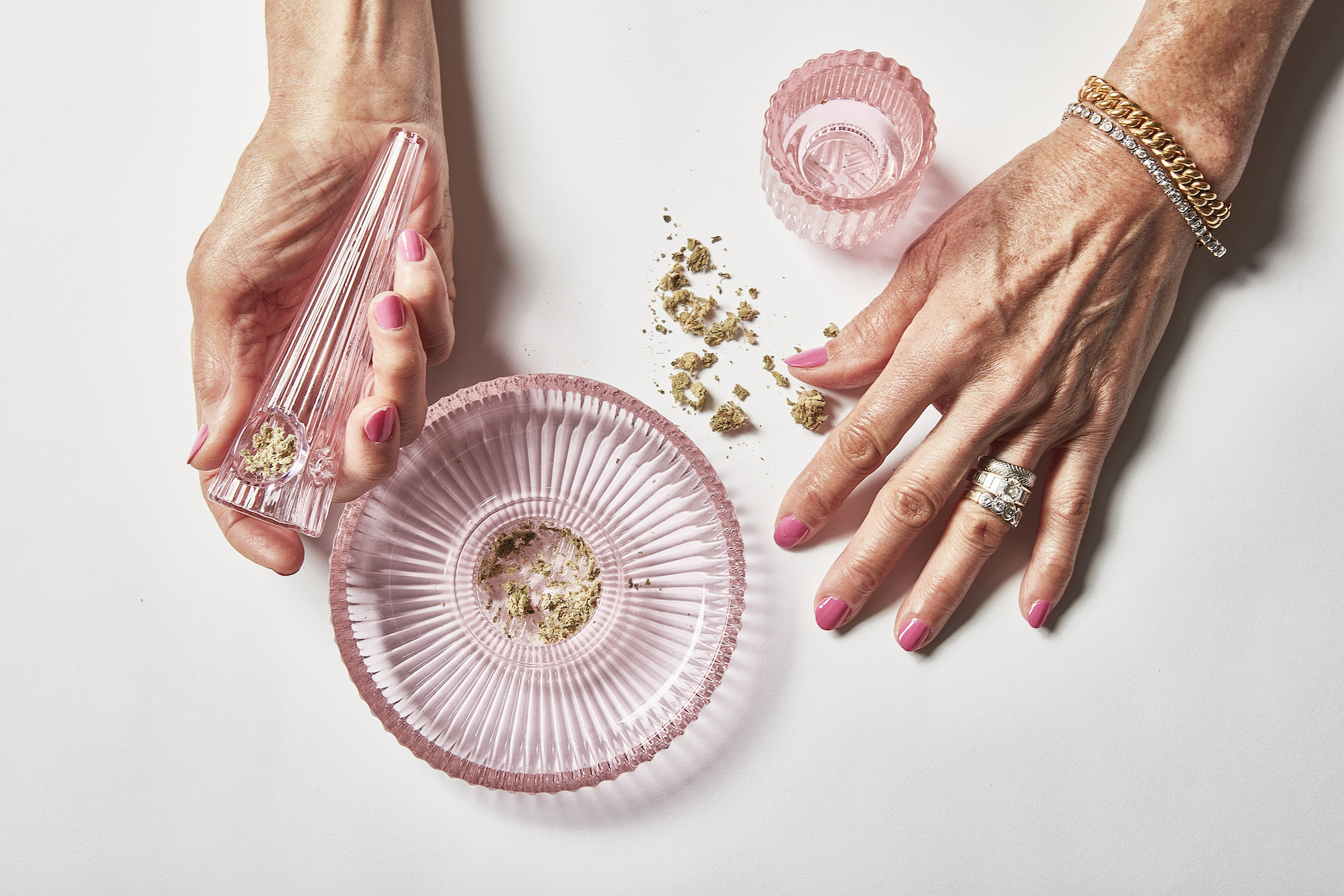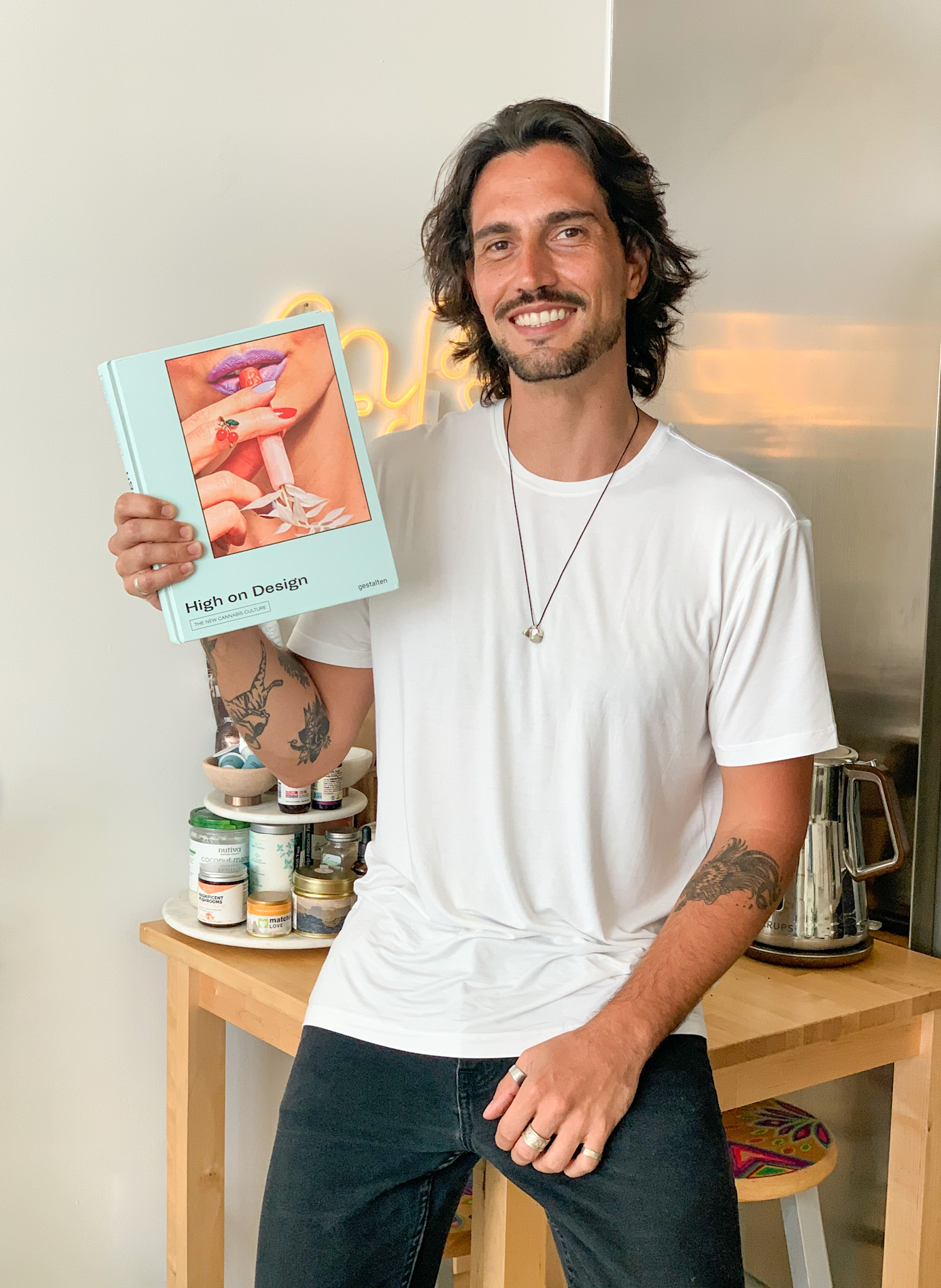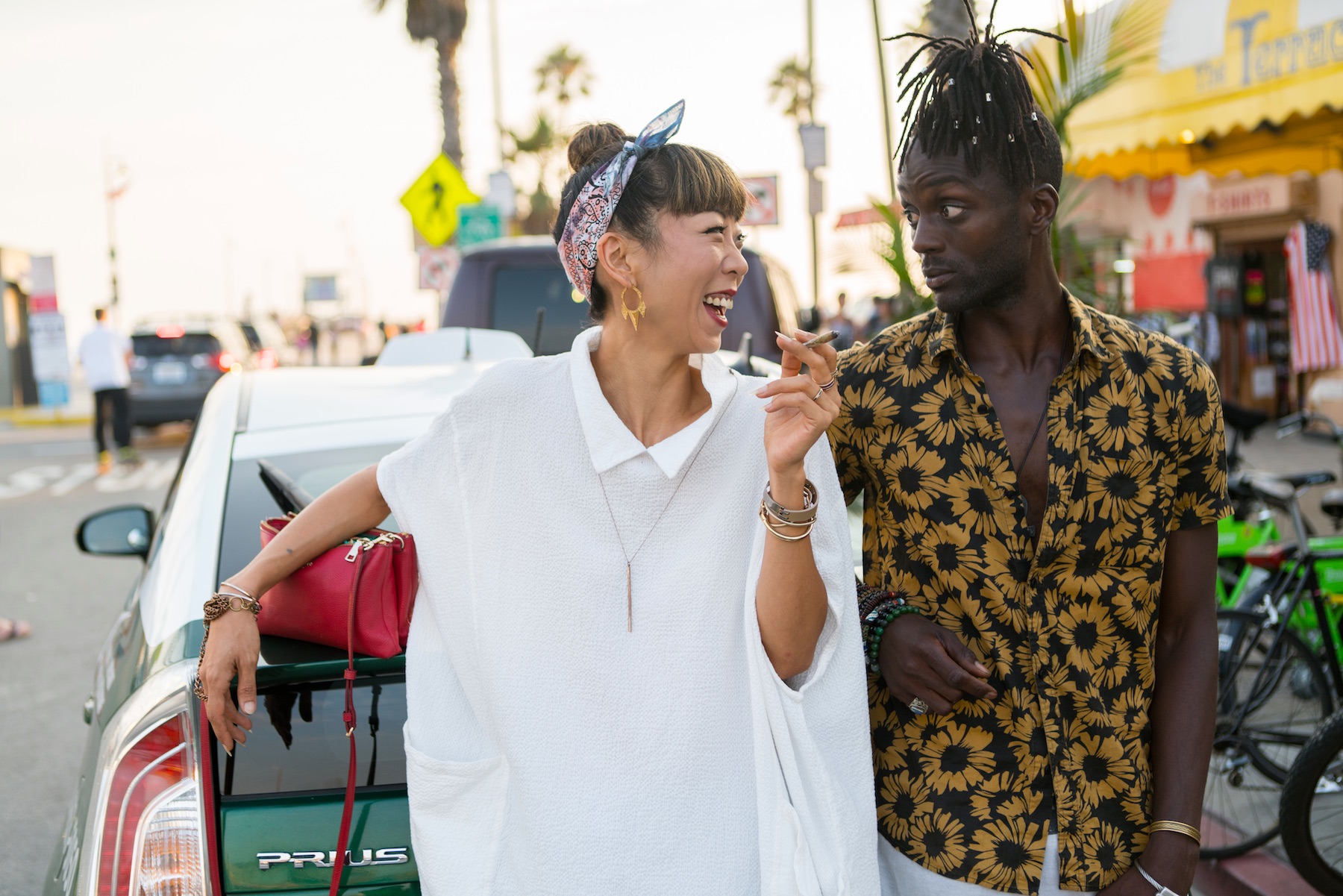Whether guest editing at German publisher Gestalten or collaborating with global magazine Monocle, Santiago Rodriguez Tarditi has analyzed subcultures and subverted their taboo in his writings. His latest endeavor with the aforementioned purveyor of coffee table books takes a deep dive into the weed industry and how legalization has paved the way for a new generation of design-savvy entrepreneurs and consumers. Following the recent release of High On Design, the self-acclaimed stoner weighs in on the novel aesthetics of the industry and gives a critical view on the politics and history, as well as the sexiest products, the most beautiful dispensaries, and the most creative movers and shakers.
Launching a book about cannabis is the ultimate way of telling the world you’re a stoner. It’s not like I was hiding it (my friends and family have known about my passion for the plant for many years), but, unfortunately, it’s a thorny issue that most people don’t openly talk about. Even in places where it’s been legalized, I’ve come across many consumers who carry the weight of stigmas resulting from a failed drug war (as if users were to blame).
The fact we’ve been fighting against cartels for decades, throwing trillions of dollars down the drain (sponsoring armies instead of teachers), and most importantly, with hundreds of thousands of lives being lost, was one of the main drivers behind this project. My goal with High on Design was to normalize the conversation around cannabis by highlighting its novel culture and the entrepreneurs behind this new tide of creatives redefining the way weed is presented and consumed.
Last year, I moved to Berlin for a semester to work with Gestalten—the German publisher known for its superb coffee-table books—on a few different projects (I had already collaborated with them on The Monocle Guide to Better Living, an endeavor I led years ago when I was Monocle’s Americas Bureau Chief). It was in Kreuzberg where I proposed to the team the idea of developing a book around pot. Despite being in one of the most liberal cities in the world, the Germans were still somewhat shaken by my proposal. That, of course, until I showed them what I was talking about.
It took one presentation and a snazzy deck to convince them of the artistic value of the burgeoning scene. Gestalten was taken aback by the flair behind brands like LaundryDay and praised the ceramic craftsmanship of companies such as Summerland. They appreciated the branding behind Old Pal and admired the style behind Gossamer’s social media. The interior design of Serra’s dispensaries in Portland helped me nail the presentation.
I could’ve kept on going for days, but I had already captured their attention. After running due diligence and doing some further market research, they agreed we should turn the idea into a book. I wanted to make sure we told the whole story; from the plant’s biology to the science behind the endocannabinoid system, its religious and sacramental importance, and our historical relationship with ganja as a source of food, fabric, fuel—and as a natural tool that has inspired creators of all sorts for centuries. It was also very important to highlight that its legalization was the effect of arbitrary laws proclaimed by racist politicians and their hidden agendas.
Once we decided the editorial structure in collaboration with editor Maria-Elisabeth Niebius, we began drawing a list of writers we wanted to contribute (including Anja Charbonneau, the founder of Broccoli magazine), as well as the book’s stylistic and photographic approach (the brainchild of Ilona Samcewicz-Parham and Madeline Dudley-Yates). We wanted the final version to be appealing to a design-savvy reader, interested in a holistic lifestyle, drawn to a gaudy vibe and striking colors.
As you might’ve noticed, the book has an elegant, feminine angle to it. From the exquisite cover shot by Heami Lee to the text contributions by Samantha Edwards, Anna Sinofzik, and Anna Southgate, the book translates the wholesome, caring spirit of the plant (cannabis has both sexes, but it’s the female that produces the flower we consume). It only made sense to focus on that angle, as most of the brands featured were launched or led by women (it’s estimated that around 30 percent of the executive roles in the industry are occupied by them).
The result is a book for people to have right-center in their living rooms (hopefully next to some of the aesthetically pleasing products we featured in its pages). It has picked up good press and sold out online for a brief second. I’m also part of a few new projects around cannabis, including a series of handmade bong/sculptures in collaboration with Italian-Colombian collective Atoq. All in all, I’m quite pleased with the outcome, but I hope readers converge on the most crucial fact: while a handful of us profit from the drug’s new cool, hundreds of people—mostly African-Americans and Latinos—are still in jail for non-violent marijuana-related crimes.
Please consider supporting @lastprisonerproject.









